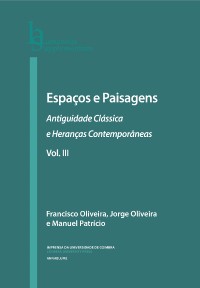Please use this identifier to cite or link to this item:
https://hdl.handle.net/10316.2/31571| DC Field | Value | Language |
|---|---|---|
| dc.contributor.author | Teixeira, Manuel | |
| dc.date.accessioned | 2014-06-24T11:02:54Z | |
| dc.date.accessioned | 2020-09-21T02:25:58Z | - |
| dc.date.available | 2014-06-24T11:02:54Z | |
| dc.date.available | 2020-09-21T02:25:58Z | - |
| dc.date.issued | 2012 | - |
| dc.identifier.isbn | 978-989-26-0292-9 (PDF) | |
| dc.identifier.uri | https://hdl.handle.net/10316.2/31571 | - |
| dc.description.abstract | Portuguese urban layouts, symbiosis of cultures Portuguese urban layouts express the symbiosis of two main cultural references: the geometry and the regularity, which is a heritage of the Roman culture; and a careful adaptation to the physical characteristics of the site, which is a heritage of the pre-Roman Mediterranean culture, later reinforced by the Muslim presence. This means that, on the one hand, on Portuguese urban layouts there is always a plan, or an idea of plan, based on a regular geometry. That is the regularity that characterizes Roman colonial cities, and which became a fundamental component of our urban culture. On the other hand, in the actual act of construction, this plan is confronted with the site, and adapted to the site’s physical characteristics. That corresponds to our Mediterranean culture of the territory, which later on the Muslims came to adopt as part of its own urban strategies, and which is also an important component of our urban culture. This symbiosis of principles, apparently contradictory, became one of the main characteristics of Portuguese urban layouts, and is translated into urban morphologies that, although when observed in plan do not present an absolute geometrical regularity, when experienced on the site, they do present a remarkable sense of order and regularity, and at the same time an intelligent adaptation to the topography, taking advantage of its characteristics. | eng |
| dc.language.iso | por | - |
| dc.publisher | Imprensa da Universidade de Coimbra | por |
| dc.publisher | Associação Portuguesa de Estudos Clássicos | por |
| dc.publisher | Centro de Estudos Clássicos e Humanísticos | por |
| dc.relation.ispartof | http://hdl.handle.net/10316.2/2376 | por |
| dc.rights | open access | - |
| dc.subject | Geometry | eng |
| dc.subject | Mediterranean culture | eng |
| dc.subject | Portuguese urban layouts | eng |
| dc.subject | Cultura mediterrânica | por |
| dc.subject | Geometria | por |
| dc.subject | Traçados urbanos portugueses | por |
| dc.title | Traçados urbanos portugueses, simbiose de culturas | por |
| dc.type | bookPart | por |
| uc.publication.firstPage | 279 | - |
| uc.publication.lastPage | 288 | - |
| uc.publication.location | Coimbra | por |
| dc.identifier.doi | 10.14195/978-989-8281-69-2_24 | - |
| uc.publication.digCollection | PB | por |
| uc.publication.orderno | 24 | - |
| uc.publication.area | Artes e Humanidades | por |
| uc.publication.bookTitle | Espaços e paisagens: antiguidade clássica e heranças contemporâneas: Vol.3 História, Arqueologia e Arte | - |
| uc.publication.manifest | https://dl.uc.pt/json/iiif/10316.2/31571/227285/manifest?manifest=/json/iiif/10316.2/31571/227285/manifest | - |
| uc.publication.thumbnail | https://dl.uc.pt/retrieve/11421865 | - |
| uc.publication.parentItemId | 52059 | - |
| uc.itemId | 73604 | - |
| item.grantfulltext | open | - |
| item.fulltext | With Fulltext | - |
| Appears in Collections: | Espaços e paisagens: antiguidade clássica e heranças contemporâneas: Vol.3 História, Arqueologia e Arte | |
Files in This Item:
| File | Description | Size | Format | |
|---|---|---|---|---|
| 24-_espa_os_e_paisagens.pdf | 640.84 kB | Adobe PDF |  |
Items in DSpace are protected by copyright, with all rights reserved, unless otherwise indicated.
